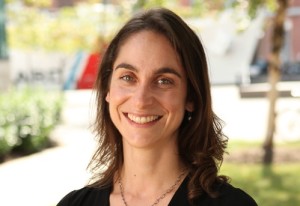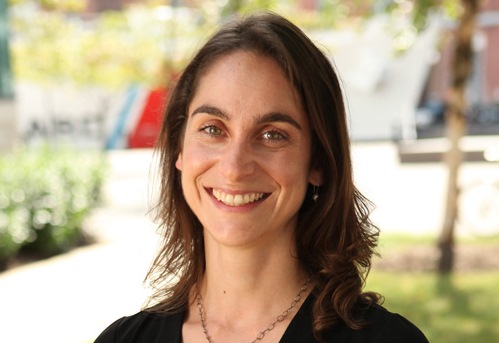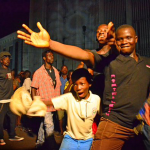As #ICFP Approaches, Youth Again Deserve their Spotlight
Today’s world hosts more youth between the ages of 10 and 24 than seen before in recent history. In some countries experiencing this “youth bubble,” young people comprise as much as one-third of the population. Many of these countries are among the poorest in the world. These large, young populations often outpace infrastructure capacity and employment markets and overwhelm school and health services, leaving youth without the structure, care and resources they need to develop into healthy and productive adults.

Erin Portillo was recently featured on Family Planning Voices. Read her story.
For countries able to capitalize on such youth-led demographic shifts, however, the possibilities are vast. When youth populations increase, fertility rates fall and an aging and retiring workforce opens up employment opportunities for young people, the potential for economic development and increased health and education service spending makes positive, rapid development possible. Protecting youth’s safety and well-being amid these changes ensures youth are prepared to drive their country’s evolution. Adolescent and youth sexual reproductive health and rights (AYSRHR) are inseparable from positive youth development.
Thankfully, dedication to AYSRHR garners more attention and urgency every day. As an international development and family planning professional, phrases like “youth bubble” and “demographic dividend” are constants. However, AYSRHR is crucial on a personal level for me, too. During my adolescence and youth in the U.S., friends of mine fell victim to sexual assault. By the time I was 24, I’d lived in cities abroad and in the U.S. where my female friends, younger peers and I navigated sexual harassment or sexual pressure from older men on a daily basis. Here in Baltimore, the teen pregnancy rate is 1.75 times higher than the national average. When societal or gender roles enable such circumstances, and when community and state structures do not or cannot provide the support or services to help youth cope with and prevent shocks, such as assault, unintended pregnancy and gender-based violence, hope is easily lost and potential shattered.
I am fortunate, however, to now work in a field full of colleagues dedicated to improving AYSRHR and youth development. My colleagues and I not only seek to identify AYSRHR needs and to involve youth in protecting their own future, but to empower youth to do so themselves and create the ownership needed for change. I am happy to work for an organization, Johns Hopkins Center for Communication Programs, which elevates youth issues as a strategic priority. I am proud to work on a project, the Health Communication Capacity Collaborative (HC3), that includes youth among its family planning priority audiences. And I am excited to attend my first International Conference on Family Planning (ICFP) in Bali where youth are honored guests and Addressing Youth Needs and Involvement is a highlighted track on the agenda. On the eve of ICFP 2015, join me in opening your mind, heart and creativity to see how we can innovate and work together and to ensure that youth have the best today so they can fully embrace their best tomorrow.
Learn about HC3’s work on youth at ICFP:
- Urban Youth Urban Adolescent SRH SBCC Implementation Kit (English Presentation), at The Marketplace of Ideas, November 10, 5-5:15 p.m. in Exhibit Hall in Pecatu Hall
- “From Rhetoric to Reality: Making Long-acting Reversible Contraception an Option for Youth,” November 11, Noon-1:20 p.m., in Room Legian 3
- Urban Youth Urban Adolescent SRH SBCC Implementation Kit (French Presentation), at The Marketplace of Ideas, November 11, 4:45-5 p.m., in Exhibit Hall in Pecatu Hall
Read up on additional resources
- HC3 Urban Adolescent SRH SBCC Implementation Kit
- HC3 Brief, Barriers to Long-Acing Reversible Contraceptive Uptake Among Youth: Highlights from the Research
- HC3 Urban Youth Evidence Synthesis
- High Impact Practice (HIP) Brief, Adolescent-Friendly Contraceptive Services: Mainstreaming Adolescent-Friendly Elements Into Existing Contraceptive Services
- HIP Brief, Improving Sexual and Reproductive Health of Young People: A Strategic Planning Guide
- UNFPA, State of World Population 2014: The Power of 1.8 Billion, Adolescents, Youth and the Transformation of the Future
- WHO, Global Strategy for Women’s Children’s and Adolescent’s Health 2016-2030








Leave a Reply
Want to join the discussion?Feel free to contribute!